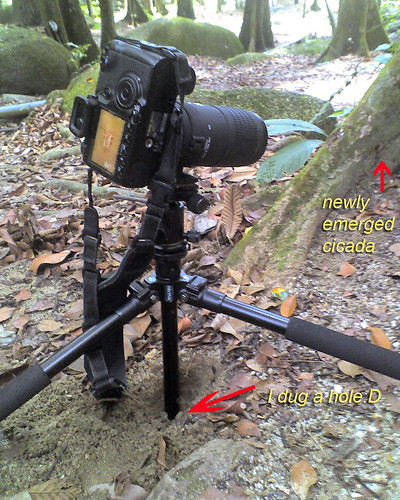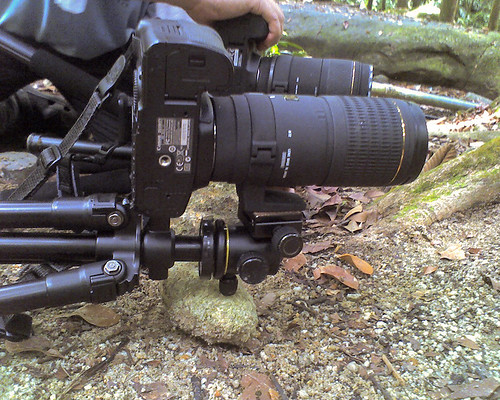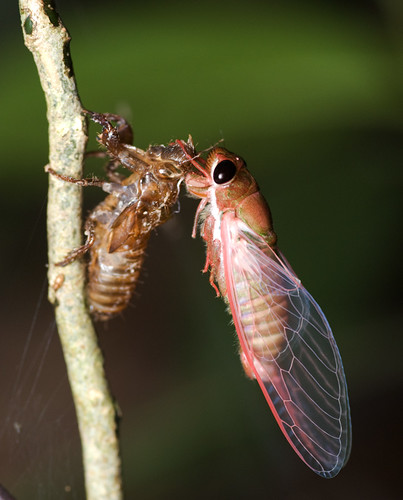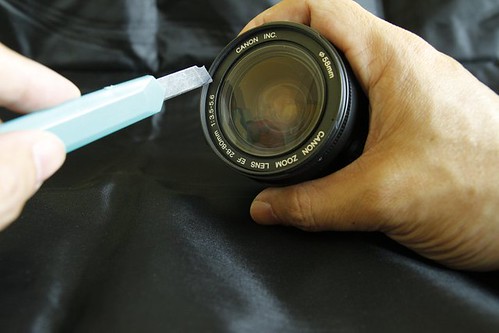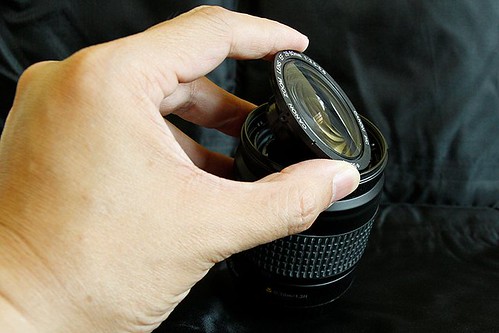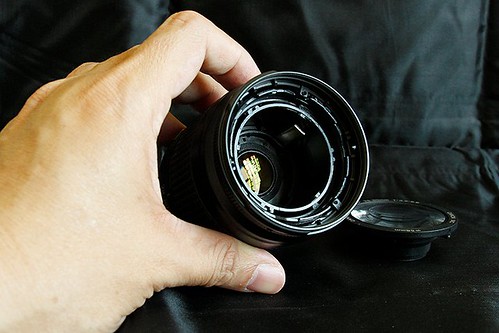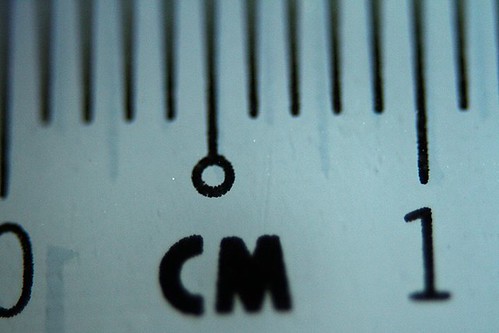If you want to try out macro but not willing yet to fork out good money for a real macro lens until you are really sure that macro is for you, then this post is for you.
Depending on what lenses you already have, one of these options should work for you. Approximate prices indicated for reference.
1. Raynox DCR250

This is a +8
diopter lens that you can snap onto your existing lens in order to achieve higher magnification. It works on lens (any brands!) with filter size from 52mm to 67mm. You will get higher magnification on the tele end only though. A 50-200 or 50-250 tele lens should work great with the DCR250.
At 200mm end, the DCR250 will give you approximately 200mm/ 125 = 1.6:1 magnification.
To calculate the magnification gained, you divide the focal length with the diopter value (8/1000 => 125)
Sample image:
zshunfa @ Flickr, A300 + SAL55200 + Raynox-DCR250 + HVL-F56AM @150mm,
Snoot Diffuser.
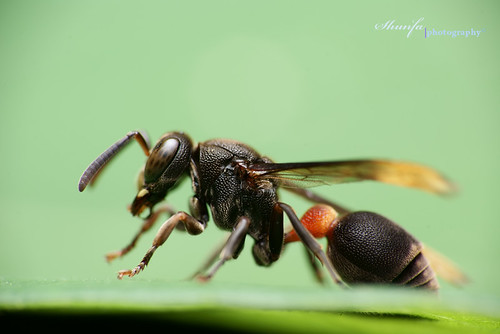
Cons: more expensive than the other options mentioned below.
2. Reversed lens
All you need is one of those cheap reversing ring/adapter. About 10USD. Here are some suitable lenses.
a) 50mm. You get a fixed 1:1 when you reverse a 50mm directly onto your camera body.
b) 18-55 kit lens. You get from 1:1 up to 3:1 (at 18mm end) with this setup.
Sam Martin's reversed 18-55 setup.
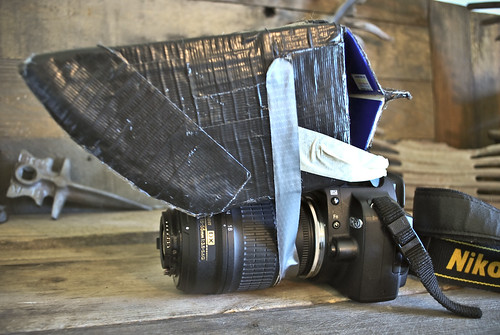
Sample image:
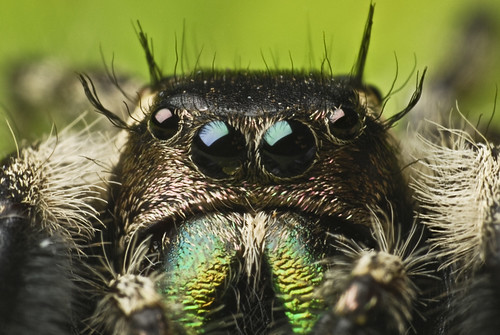
c) other lens you can reverse:
- 28mm, gives you about 2:1 magnification
- 20mm, gives you about 3:1 magnification
Exact magnification varies with different make/model of lens even though the focal length is the same. The best way to measure magnification is to shoot an MM ruler as explained in this
post.
A couple of examples to help you understand what type of reversing ring/adapter you need.
Example #1: Canon 50mm F1.8


The filter size is 52mm, therefore you need a 52mm reversing ring for Canon. This is the one you will need:
Example #2: Canon EF-S 18-55mm f/3.5-5.6 IS SLR Lens


The filter size is 58mm, therefore you need to get a 58mm reversing ring/adapter for Canon.
Example #3 Nikon 18-55mm f/3.5-5.6G AF-S DX VR Nikkor Zoom Lens


The filter size is 52mm (different from the Canon 18-55, with 58mm filter thread size), therefore you need to get a 52mm reversing ring/adapter for Nikon.
Cons: no auto focus, no ETTL/TTL. More about this below.
NOTE: there is now a reversed lens adatper from Meike that allows you to reverse a lens and retain the control of aperture as well as AF.

3) Extension Tubes
I talked about it in detail
here.
Since this post is about macro on the cheap, we will only talk about the type of extension tubes without electrical circuitry nor mechanical coupling, which means no auto focus (AF) and no TTL.
You have to preset your aperture to the desired value, normally F11, which means the lens will close down and the viewfinder will be dim. You might need a focusing light like
this.
Since there is no TTL, you will have to guess the flash power required to properly expose a scene at different magnification and F number. This can be quite a pain.
You can use ET (extension tubes) on the 50mm, 28mm, 20mm etc. As mentioned in this
post, :
Magnification gained = length of tubes / focal length
For example, with the nifty fifty 50mm F1.8 and full set of 68 mm of tubes
Magnification gained = 68/50 = 1.36X.
Full set of ET on the 28mm will give you around: 68/28 = 2.4x
Full set of ET on the 20mm will give you around: 68/20 = 3.4X
Cons: no auto focus, no ETTL/TTL.
4) Extension tubes + reversed lens
Yes, by now I am sure you have thought about combining method #2 and #3. All you need is the extension tubes and the right reversing ring/adapter.
5) A hacked 35-80mm or 28-80mm.
You can remove the front element of a 35-80mm or 28-80mm easily and turn it into a super lightweight macro lens than can go from around 0.7X to 1.8X. More detail
here.
